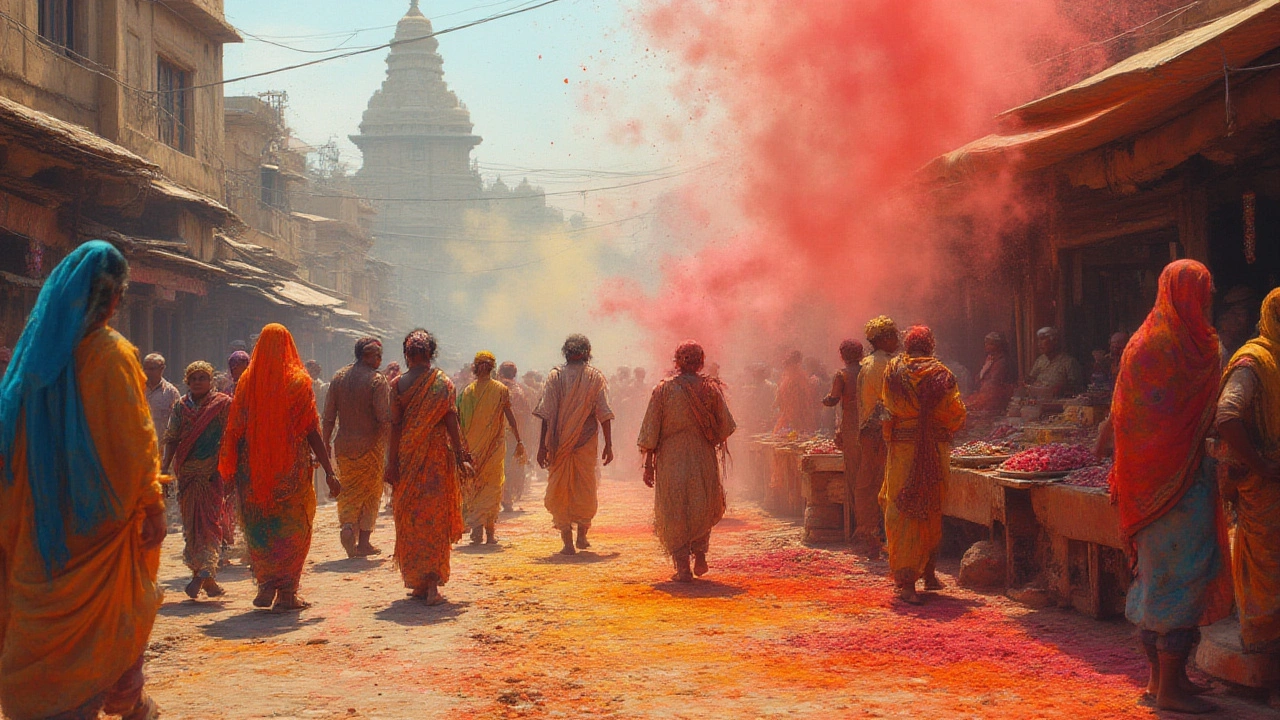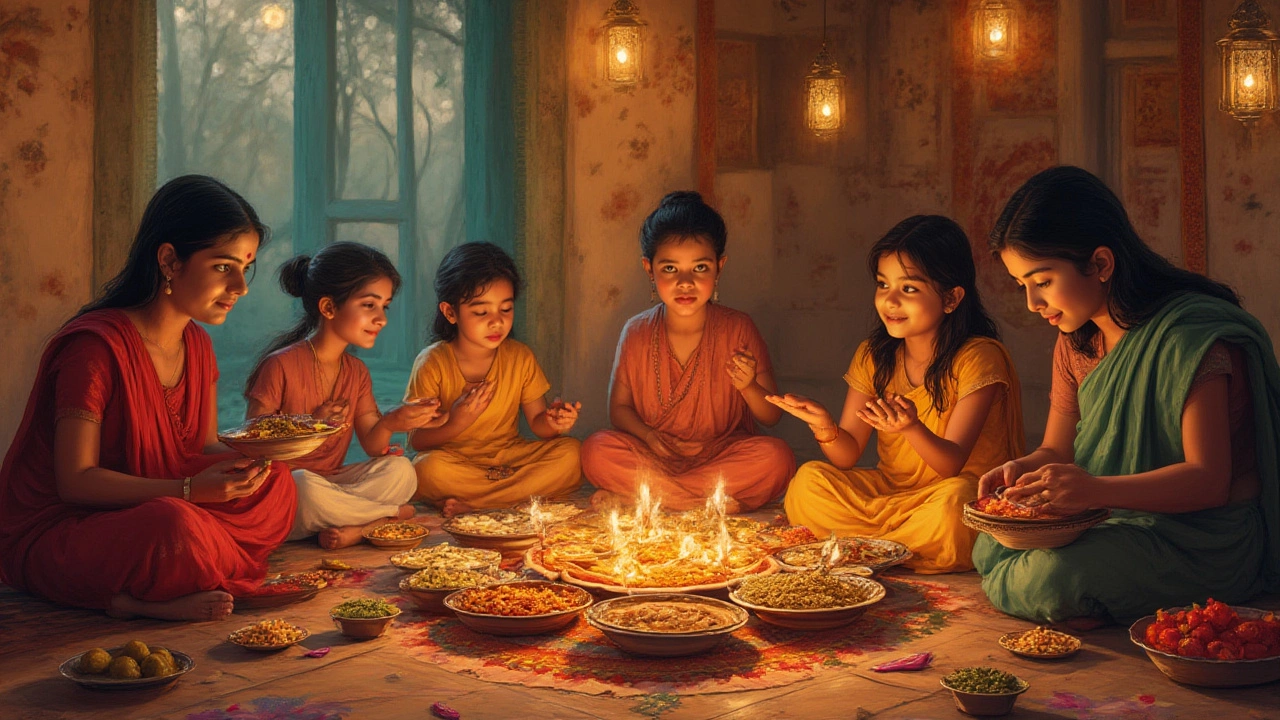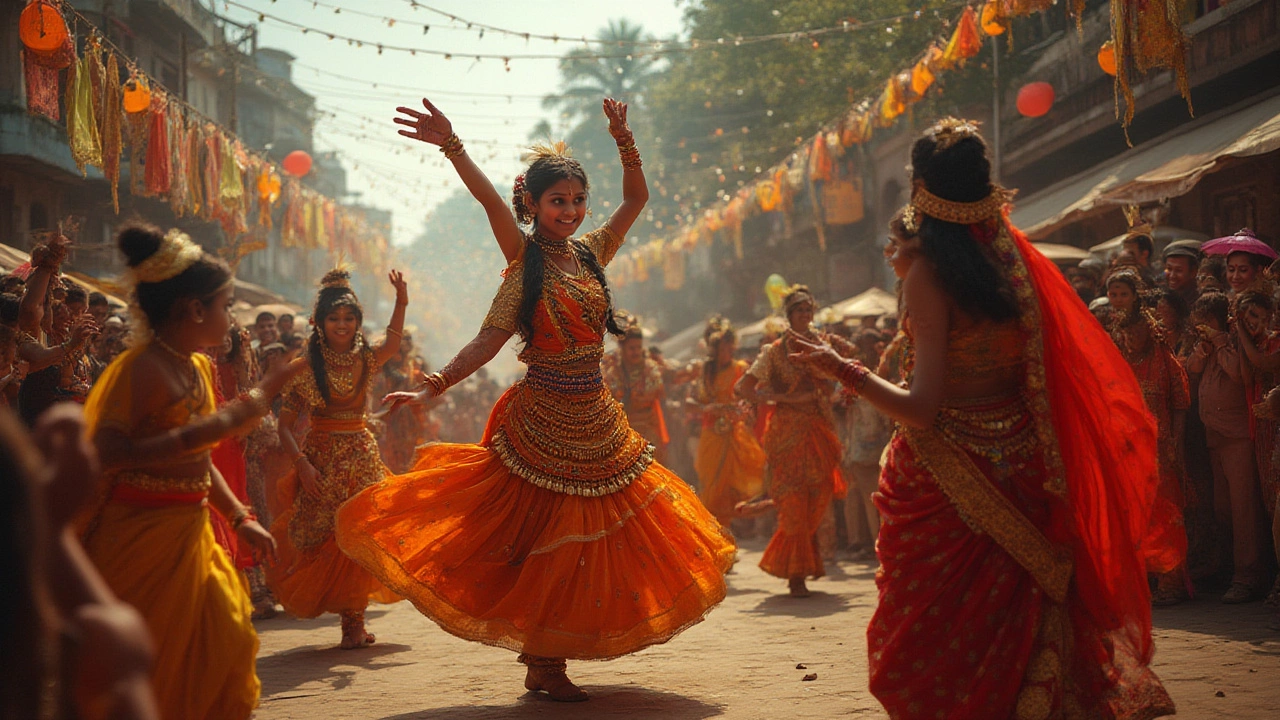
People have tried for centuries to describe what makes India so special. But it’s not a single sight or sound—it’s the mashup of ancient traditions rubbing shoulders with modern life, the festivals lighting up streets in colors you’ve never seen, or chai shared with strangers on a train. Leave your assumptions at the airport. India loves to surprise you.
Culture That Never Sits Still
India is a living kaleidoscope where you crash into 5,000 years of history at every street corner. The country has 22 official languages—countless more if you include dialects—and over 2,000 distinct ethnic groups. You can fly three hours and feel like you’re on another planet. Down south, you’ll hear the lyrical roll of Malayalam or Tamil; up north, you’ll notice the sharper rhythms of Punjabi or Kashmiri. English often serves as the daily bridge that connects this linguistic carnival. That’s how a student in Delhi can chat with a farmer from Kerala in a Mumbai hotel—everyone somehow understands each other.
India is about more than words. Every meal is a conversation between regions. In the east, you’ll get spongy rasgullas soaked in syrup, while the west serves fiery theplas. Each festival brings its flavor: Bonfires on Lohri, oil lamps for Diwali, colored powders flung in the air for Holi. If you think Christmas is only for Christians, check again—Indians love an excuse to celebrate. That’s why cities shut down for Eid, Christmas, and even weeks-long weddings where hundreds of guests dance under flower-filled skies.
Then there’s the sheer number of world records tucked into India's pocket. The Kumbh Mela, for example, is the biggest gathering of humans anywhere—over 50 million people line the Ganges rivers, all to take part in rituals that stretch back thousands of years. India's movie industry, Bollywood, beats out Hollywood in number of films made every year. And yes, pretty much every city has its own kind of cricket mania, with matches played on streets with old tennis balls, watched by everyone from toddlers to grandparents.
There’s a risk that this kind of cultural overload can leave anyone dizzy, but locals have a knack for making you feel at home. Try showing even a bit of interest in a custom or festival, and someone will probably invite you over for food—possibly six different dishes, all eaten with your hands. Sharing is impressive here because community means everything. In fact, one small north-eastern state, Meghalaya, runs on a matrilineal system—children take their mother's surname and property is passed down the female line.
Art isn’t just for museums; it’s stitched into saris, painted on trucks, blasted from speakers at roadside stalls, displayed in the architecture of Mughal forts, Hindu temples, and colonial-era churches. Everywhere you look, the old and the new are tangled together, making sure you'll always have something worth snapping a photo of. Ask anyone who’s spent real time in India—they’ll tell you, culture is never just a backdrop. It’s a full-blown parade, and you’re more than welcome to join in.

Traditions That Shape Daily Life
You can’t talk about India without talking about its traditions. Some of them are centuries old, others just a few decades, but almost all of them still shape daily life in big ways. From the way people greet each other to the way big family decisions are made, all of it’s woven into everyday routines.
Take the greeting “Namaste”—palms pressed together, just a small bow. It’s more than hello; it means “I bow to the divine in you.” You’ll notice quickly that respect for elders isn’t lip service here. Family is the backbone of Indian society. Most homes have three generations living under one roof, all sharing chai, arguments, and inside jokes. Quite a few marriages are still arranged, though the idea has shifted—young Indians today meet their matches at work, online, or through family introductions instead of just leaving it all to fate or an auntie’s choice.
Festivals aren’t just public holidays; they’re personal milestones. North or south, everyone waits for Diwali, the festival of lights—where you’ll see millions of lamps twinkle on balconies, temples, and riverbanks. Holi brings technicolor chaos, smearing everyone from toddlers to shopkeepers with bright powders. On Ganesh Chaturthi, entire neighborhoods sculpt and worship huge, elaborate statues of the elephant-headed god, then carry them in processions to rivers and immerse them with music blaring and people dancing on the streets.
Even the calendar bends around these rituals. In Kerala, the new year (Vishu) involves elaborate feasts, gold coins, and mirrors arranged on banana leaves to bring good luck. The harvest festival Pongal in Tamil Nadu is so big that office workers, engineers, and students all get time off to return home for days of festivities. In Ladakh, the Buddhist Hemis Festival fills monasteries with masked dances that have remained unchanged for seven centuries.
Indians are obsessed with auspicious times—weddings, housewarmings, even business openings get planned by consulting astrologers for the perfect planetary alignment. And yes, there’s a tradition for everything, from the way you tie your sari in Gujarat (front pleats) versus Bengal (side drape), to how you eat—some believe food tastes best when eaten by hand, others swear by a spoon.
Weddings in India make ordinary parties look tame. Some last a full week, with separate ceremonies for everything: applying turmeric paste, exchanging flower garlands, barefoot walks around the sacred fire. The guest list can hit several hundred, sometimes even a thousand, and that’s not counting the people who show up anyway, just to be part of the fun.
And then there’s jugaad—a uniquely Indian style of finding quick, clever fixes to life’s problems. Broken charger? Someone will rig a working plug using tape and hope. Need a cricket bat? Just use a plank of wood. This mix of resourcefulness and humor gets people through power cuts, traffic chaos, or even rainstorm floods. Nothing is wasted without a fight—plastic packets become plant pots, and old saris are transformed into stylish cushion covers.
The thing is, this respect for traditions doesn’t mean India is stuck in time. People still bend the rules, merge the new and the old, experiment with ideas. One city bans plastic at festivals, another adds drone cameras for temple security. Last Mother's Day, school children across Delhi sent video messages to their grandmothers via WhatsApp. Tradition gives structure, but imagination keeps the wheels turning.

Flavors, Sights, and Sounds Born Nowhere Else
Food in India is a monument all by itself, and honestly, it’s a full-blown sensory adventure. Each region has its own rules, ingredients, and drama. You could spend a month traveling on just street food alone and never eat the same thing twice. Mumbai has vada pav (think a spicy potato slider); Kolkata rolls out puchka (those crispy, water-filled bombs), and Chennai’s breakfast idlis are fluffier than most cupcakes.
Spices deserve their own TED talk. Cardamom, cumin, fenugreek—these words are everyday magic for Indian cooks. Indian food isn’t just about heat, it’s about depth. A single spoonful might hit sweet, sour, salty, bitter, and spicy all at once. Dishes like butter chicken, dosas, and biryani have won fans worldwide, but you haven’t really eaten them until you’ve tried them where they were born. Even the way people serve food feels different—families eat together, passing bowls around and urging everyone to take seconds, thirds, or even more.
Street food culture is wild. Grab a plate of chaat from a stand that’s been open for decades, or try samosas so crisp they shatter at first bite. Food safety isn’t always perfect (so bring your stomach medicine), but that’s the thrill—you never quite know what you’ll discover next.
India doesn’t just smell incredible, it looks unforgettable. Every street pops with color—women in yellow and pink saris, auto-rickshaws painted with Bollywood scenes, neon shop signs, holy cows decked in flowers. Markets are a feast for the eyes, stacked with pyramids of fruit, bangles, and sweets. Even Indian currency is a sight—each note shows off tigers, peacocks, or ancient landmarks.
You want ancient wonders? There’s Rajasthan’s palaces blinking gold under sunset, the snowy peaks of the Himalayas, Kerala’s calm backwaters, or the sandy temples of Hampi. India also has the world’s largest sundial (at Jantar Mantar, Jaipur), the tallest statue (Statue of Unity in Gujarat), and Asia’s cleanest village (Mawlynnong, Meghalaya).
And then comes the sound. India buzzes, hums, and howls. You’ll hear morning chants from temple loudspeakers, wedding bands drumming at 2 a.m., the clang of metal from tea sellers, and the jangle of bells on passing cows. Sometimes it’s chaos, sometimes it’s peace—try sitting in the desert at night, under the Milky Way, while villagers sing folk songs by the fire.
No matter where you go—mountain, jungle, city, coast—India throws you into the present like nowhere else. It’s impossible to stay unwowed, even if you’re waiting for your train on a crowded platform. The country isn’t just a place, it’s a live wire.
If you love numbers and trivia, check the table below for some fun facts about India that most people don’t know:
| Fact | Detail |
|---|---|
| Population (2025) | Over 1.43 billion (2nd largest in the world) |
| Official Languages | 22 |
| Festivals Each Year | More than 40 major festivals, thousands local |
| Highest Cricket Ground | Chail, Himachal Pradesh (8,018 ft above sea level) |
| World’s Largest Vegetarian Population | About 30% of Indians |
| Biggest Religious Gathering | Kumbh Mela – 50 million in a single day |
| World’s Tallest Statue | Statue of Unity (182 meters, Gujarat) |
| Heritage Sites | 42 UNESCO World Heritage Sites (2025) |
India is impossible to sum up in one neat box. You can study the guidebooks, scroll Instagram, even ask your smartest friends, and you still won’t get the whole picture until you see it for yourself. The real magic is in those tiny slices of life: a neighbor dropping by with hot samosas, a temple elephant decorated during festival week, an unexpected wedding invite, or a little girl teaching you to say ‘thank you’ in her own language. That’s what’s truly special in India—the country isn’t just made up of history and tradition, it’s powered by millions of everyday surprises. Keep your senses wide open. India will meet you more than halfway.